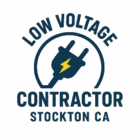How Power over Ethernet (PoE) is Transforming Networking in Stockton Businesses
Introduction
Businesses in Stockton, California, looking into Cat6 and Fiber Optic Installation Stockton are rapidly adopting Power over Ethernet (PoE) as a game-changing networking technology. From security cameras and VoIP phones to wireless access points and smart building systems, PoE is reshaping how Stockton businesses deploy technology while preparing for the future of smart offices and IoT-driven workplaces.
This article explores how PoE is transforming local businesses, its practical applications, key benefits, challenges, and what the future looks like for this innovative networking solution.
Table of Contents
- What is Power over Ethernet (PoE)?
- Why Stockton Businesses are Adopting PoE
- Core Benefits of PoE Networking
- Cost savings
- Simplified infrastructure
- Flexibility and scalability
- Energy efficiency
- Top Business Applications of PoE in Stockton
- Security & surveillance
- VoIP communications
- Wi-Fi and IoT devices
- Smart lighting and automation
- Challenges and Considerations for PoE Deployment
- Future Trends: PoE and the Smart Business Ecosystem
- How Stockton Businesses Can Get Started with PoE
- Conclusion
- FAQs
- References
What is Power over Ethernet (PoE)?
Power over Ethernet (PoE) is a technology that allows network cables to carry both electrical power and data. This means devices like IP cameras, access points, and VoIP phones can operate without needing separate power adapters. According to the IEEE 802.3 standards, PoE has evolved significantly:
- PoE (802.3af): up to 15.4W per port
- PoE+ (802.3at): up to 30W per port
- PoE++ (802.3bt): up to 60-100W per port
This progression has expanded PoE’s ability to power more energy-intensive devices such as LED lighting, smart displays, and industrial equipment.
Why Stockton Businesses are Adopting PoE
Stockton’s business landscape includes healthcare providers, logistics companies, retail stores, and tech-driven offices. Each of these industries benefits from PoE because it:
- Reduces installation costs for new offices and retrofits
- Enhances flexibility in building layouts and expansions
- Supports IoT integration, crucial for smart workplaces
- Enables reliable connectivity for security and compliance requirements
For instance, a Stockton healthcare facility can use PoE to power nurse call systems and patient 0monitoring devices, while retail businesses can streamline POS systems and surveillance cameras without complex wiring.
Core Benefits of PoE Networking
1. Cost Savings
PoE reduces installation and maintenance costs by eliminating separate electrical wiring, especially in older Stockton buildings.
2. Simplified Infrastructure
Only one cable is required for both data and power, making network design and upgrades more efficient.
3. Flexibility and Scalability
Businesses can deploy devices anywhere Ethernet cables reach, without worrying about power outlets.
4. Energy Efficiency
Many PoE switches support smart energy management, reducing consumption and aligning with Stockton’s growing focus on sustainable business practices.
Top Business Applications of PoE in Stockton
Security & Surveillance
PoE is widely used to power IP security cameras in Stockton businesses, ensuring reliable connectivity while enabling centralized power management.
VoIP Communications
Modern offices in Stockton deploy PoE-enabled VoIP phones, which simplify desk setups and ensure business continuity during power interruptions.
Wi-Fi and IoT Devices
PoE powers wireless access points that support Stockton’s hybrid workforce, as well as IoT devices such as sensors, access control systems, and environmental monitors.
Smart Lighting and Automation
PoE-enabled LED lighting systems allow centralized control, automated schedules, and integration with occupancy sensors to reduce energy costs.
Challenges and Considerations for PoE Deployment
While PoE offers many advantages, Stockton businesses should also consider:
- Power limitations: High-power devices may still require direct electrical wiring.
- Switch upgrades: Legacy switches may not support PoE standards.
- Heat generation: Higher wattage PoE++ can increase heat, requiring cable management planning.
- Initial investment: PoE switches and injectors may cost more upfront but deliver long-term ROI.
Future Trends: PoE and the Smart Business Ecosystem
In 2025 and beyond, PoE will play a central role in Stockton’s digital transformation:
- Integration with 5G networks for seamless connectivity
- Expansion in smart buildings, where PoE powers lighting, sensors, and climate systems
- AI-powered surveillance relying on PoE-connected cameras
- Sustainability initiatives, as PoE reduces carbon footprints through efficient energy use
IDC projects that the global PoE market will exceed $3.5 billion by 2028, signaling its growing adoption in business environments.
How Stockton Businesses Can Get Started with PoE
- Assess current infrastructure – Determine if existing switches support PoE.
- Identify high-priority use cases – Start with VoIP, cameras, or access points.
- Plan for scalability – Invest in PoE switches with capacity for future IoT expansion.
- Work with certified installers – Partner with local Stockton networking professionals for proper installation and compliance.
Conclusion
Power over Ethernet is no longer just a convenience—it’s a strategic networking solution driving efficiency, flexibility, and innovation in Stockton businesses. By adopting PoE, organizations can lower costs, enhance connectivity, and prepare for the smart workplace future. Businesses that embrace this technology today will be better positioned to stay competitive in tomorrow’s digital economy.
FAQs
Q1: Is PoE safe for all devices?
Yes, PoE standards include power negotiation protocols to ensure devices only draw the required power.
Q2: Can PoE work with existing Ethernet cables?
Yes, Cat5e, Cat6, and higher cables typically support PoE. However, higher wattage PoE++ may require Cat6a or better.
Q3: What industries in Stockton benefit most from PoE?
Healthcare, retail, education, logistics, and professional services are leading adopters.
Q4: Does PoE save energy compared to traditional wiring?
Yes, PoE systems can be centrally managed and powered down during off-hours, reducing overall consumption.
Q5: What’s the difference between PoE and PoE+?
PoE provides up to 15.4W, while PoE+ delivers up to 30W, enabling support for more powerful devices.
